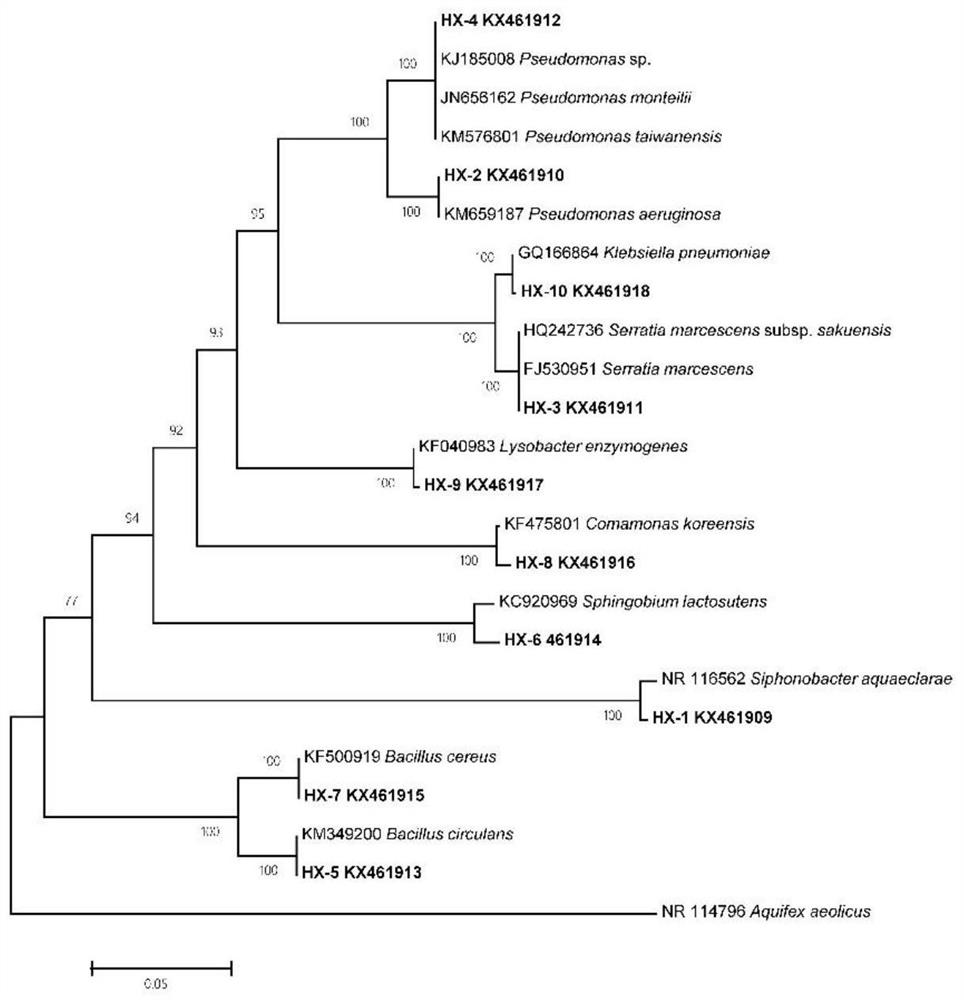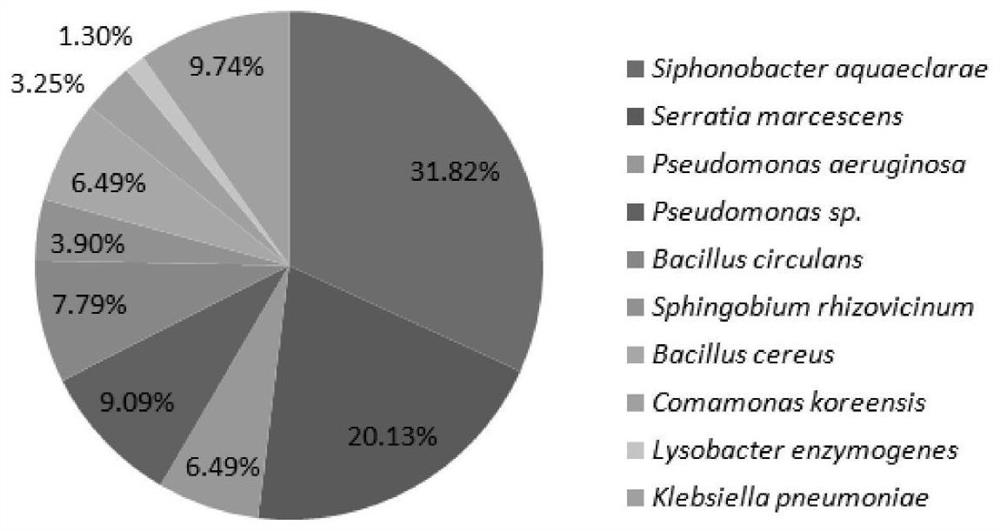A method for isolation and identification of cellulose-degrading bacteria in the intestinal tract of monochamus monochamus larvae
A technology of cellulose degradation and P. serrata, applied in the field of microorganisms, can solve the problems of rare reports on separation and identification research.
- Summary
- Abstract
- Description
- Claims
- Application Information
AI Technical Summary
Problems solved by technology
Method used
Image
Examples
Embodiment 1
[0080] The larvae of Monochamus alternata were collected in Guantou Town, Lianjiang, Fujian Province (N 26.150°; E 119.593°). The insect-infested wood was sawed into a section of about 1m long and placed in a 1.5m long × 1.5m wide × 1.0m high growth chamber. In the insect cage, the insect cage is sealed with an iron sand net with a mesh diameter less than 2mm. The larvae of Monochamus alternatus were collected by peeling off the bark of Pinus massoniana and splitting the wood sections for experimental needs.
[0081] Isolation and identification method of flora structure
[0082] 1) placing Monochamus alternatus larvae in a sterile environment with a humidity of 90wt% and starvation treatment for 48 hours to obtain Monochamus alternatus larvae whose intestines are emptied of food residues;
[0083] 2) soaking the Monochamus alternatus larvae whose intestines have been emptied of food residues with alcohol with a volume concentration of 75% for 3 minutes, and rinsing with ster...
Embodiment 2
[0089] A single colony was picked from the No. 4 solid medium plate with a single colony obtained in Example 1 for morphological identification and physiological characteristic determination.
[0090] Observe and record the color, shape, texture and other characteristics of a single colony under an optical microscope. The identification of bacterial cell morphology refers to the method of "Bergey's Bacterial Identification Manual" to identify bacterial colony color, bacterium shape, size, Gram Negative and positive distinction, presence or absence of flagella, presence or absence of sterile membrane, and the number of bacterial colonies represented by the strain, etc. (Smibert, 1994).
Embodiment 3
[0092] A single colony was picked from the No. 4 solid medium plate with a single colony obtained in Example 1 for molecular identification.
[0093] According to the instructions of the bacterial DNA extraction kit (Omega, USA), the total DNA of each bacteria was extracted respectively, and then the bacterial 16S rDNA was amplified using the bacterial universal primers fD1 and rP1. For specific methods, see Huetal. (2014b). The 16S rDNA sequence of the sequencing data was uploaded to Genbank (http: / / www.ncbi.nlm.nih / gov / blast / ).
[0094] The 16S rDNA sequence gene of bacterial strains with cellulose-degrading activity in the intestinal tract of Monochamus monochamus larvae was submitted to the NCBI database with accession numbers: KX461909~KX461918.
[0095] In order to further determine the taxonomic status of the intestinal cellulose-degrading bacteria of each Monochamus alternata, all the sequences were first matched with the RDP II database sequences (Cole et al. Knowing...
PUM
 Login to View More
Login to View More Abstract
Description
Claims
Application Information
 Login to View More
Login to View More - R&D
- Intellectual Property
- Life Sciences
- Materials
- Tech Scout
- Unparalleled Data Quality
- Higher Quality Content
- 60% Fewer Hallucinations
Browse by: Latest US Patents, China's latest patents, Technical Efficacy Thesaurus, Application Domain, Technology Topic, Popular Technical Reports.
© 2025 PatSnap. All rights reserved.Legal|Privacy policy|Modern Slavery Act Transparency Statement|Sitemap|About US| Contact US: help@patsnap.com



